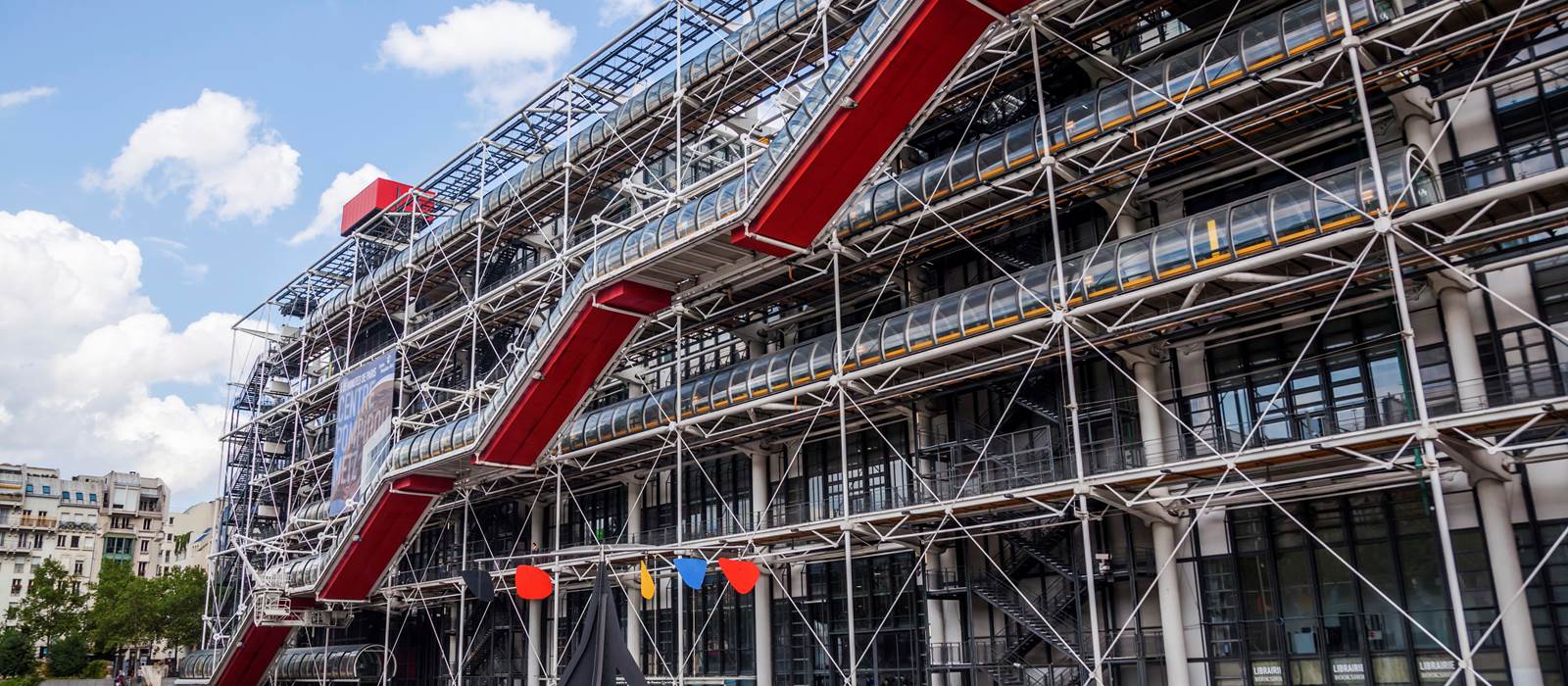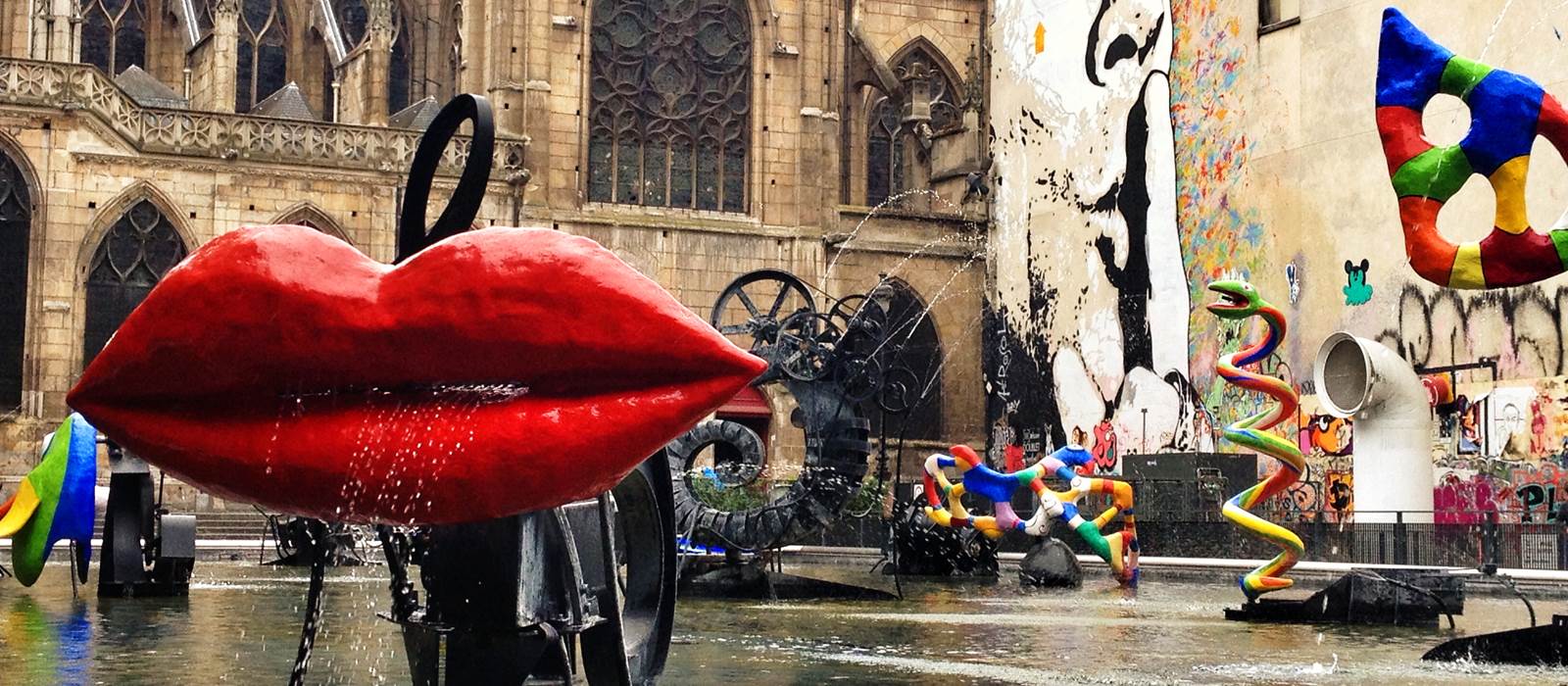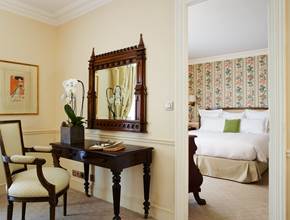
The Centre Pompidou: Musée National d'Art Moderne
Home of Modern and Contemporary Art in France
As one of the most visited museums in the world – it is currently ranked 10th – the Musée National d'Art Moderne is a centre for modern (1905 - 1960s), contemporary and progressive (1960s -) art in Paris. With one of the largest collections of art in the world, a visit to the city is not complete without a trip to the permanent gallery and temporary exhibitions, housed at the extraordinary Centre Pompidou.
This unusual building has been a talking point for Parisians and tourists alike since it was built in 1977. Amongst the works at the Musée National d'Art Moderne, are paintings, sculptures, engravings and installations by Matisse, Picasso, Klee, Kandinsky, Balthus, Giacometti and Pollock. Build a visit into your break away in Paris – the gallery is just a short Metro ride from the Hotel de Vigny…
A Building As Artistic As Its Contents
Its central location in the 4th arrondissement is just one reason to visit the Centre Pompidou – it’s also close to Cathédrale Notre-Dame and plenty of green spaces like Jardin Anne-Frank and Fontaine Stravinsky so you can build other sites into your day. Since its construction in 1977, the building has drawn tourists from the world over to gaze at its unusual design and enjoy its outstanding art collection – the exterior itself has been likened to the contemporary contents within. Compared to its surroundings, the building stands out against its classic Haussmann neighbours. Made predominantly from glass, brightly-coloured pipes and what looks like scaffolding, the structure has certainly divided visitors’ opinions.
Initially, it received negative criticism, but over time, the significance of the building in the architecture world has been recognised. The structure becomes even more interesting when you learn that the pipes are not just differently coloured for aesthetics, they each signal a different function: green pipes are for plumbing, blue for climate control, yellow for electrical wires and red are for safety devices like fire extinguishers. The more you look at the building, the more there is to notice and admire – as National Geographic put it, it’s ‘love at second sight.’
Outside of the museum is the Place Georges Pompidou. This large square is surrounded by relaxed cafes and stalls, and attracts a lot of performance art and musicians to the area. Sitting outside on the steps in the sunshine, eating a crepe whilst taking in the atmosphere is wonderful – you could get your caricature drawn, enjoy a spontaneous dance show or watch a skateboarding competition.
A Stunning Collection of Thought-Provoking Pieces
No matter what time of year you visit, there is guaranteed to be a fascinating, thought-provoking exhibition open at Musée National d'Art Moderne. Past artists celebrated in the exhibits include Salvador Dali in 1979, Andy Warhol in 1990 and Roland Barthes in 2002. In 2007 the whole exhibition space was dedicated to the mesmerising work of Annette Messager as billowing sheets, red fabric and children’s soft toys were dragged, wafted and flung around the rooms in an oddly hypnotic and repetitive ebb and flow. The collection was designed to tackle themes such as motherhood, the female body and lost childhood memories.
More recently, exhibitions have included poignant photography by Henri Carter-Bresson, geometric nature prints by Simon Hantaï, all things colourful and shiny by Jeff Koons and the cubist animals of Wilfredo Lam. Whether you are familiar with the artist’s work or not, you are in for a mentally-stimulating experience, seeing unusual techniques, challenging norms and questioning social matters in ways guests will not have witnessed before.
With over 100,000 artworks, the museum is sure to pique the interest of any guest. Visitors will also notice that all the visual arts are covered, from drawing to photography, new media to architecture, painting to experimental cinema. Due to its contentious nature however, it is anticipated that not everyone will like or appreciate everything in the collection – modern art is designed to be discussed and dissected, defended and disputed. If these works get people talking and thinking in new ways, even if the response is negative, then the artist has done their job.
Wander the wide, open spaces, sit in the cozy and darkened cinemas and marvel at the machine-like pipes of the interior. Pull the art apart (figuratively) with friends, decide what you like and don’t like, understand and don’t understand about the artwork on display here and hopefully you will leave the gallery feeling fulfilled, stimulated… and ready for a delicious lunch in the Place Georges Pompidou.




